Braving the New World: Dystopian RA
Cover Image: By Борис У. (Own work) [CC BY-SA 3.0 (http://creativecommons.org/licenses/by-sa/3.0) or GFDL (http://www.gnu.org/copyleft/fdl.html)], via Wikimedia Commons.
Without a doubt, the 2016 presidential race for the White House has left many politically drained, and with the new administration, concerned. Since the election, sale of George Orwell’s book, 1984, has topped the Amazon bestseller list[1], and in response, Penguin is working on a larger-than-normal reprint due to demand[2]. The unsteady political climate and unsure footing of American foreign policy has led many readers to find solace in books that they feel they can relate to: dystopian novels. Dystopian novels usually center on an ultra-antagonist, like a government or similar entity that exerts complete control of those living in its jurisdiction. Standard tropes for the genre include mind control, severe punishments, poor living conditions, advanced science used for the wrong purpose, drugs, propaganda, rules, reliance on outdated forms of communication, problems with procuring food, and disease. Below, are book recommendations for post-1984 readers seeking more bleak descriptions of future humanity’s doom.
[Warning]: Spoilers ahead.
Hunger Games Trilogy by Suzanne Collins
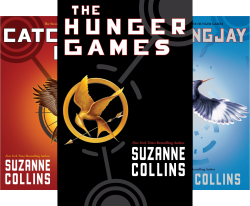 The series focusses on Katniss Everdeen and her quest to bring down the Capitol’s totalitarian regime. In the series, we learn there was an uprising against the Capitol’s rule, and in response, members of the various Districts are forced to give up their children to compete in a game meant to demoralize the populace and keep them under control. The Hunger Games Trilogy has blood, determination, and shows the ironies that can come with a rebellion to overthrow one ruler, to have another equally unjust ruler try to set-up shop.
The series focusses on Katniss Everdeen and her quest to bring down the Capitol’s totalitarian regime. In the series, we learn there was an uprising against the Capitol’s rule, and in response, members of the various Districts are forced to give up their children to compete in a game meant to demoralize the populace and keep them under control. The Hunger Games Trilogy has blood, determination, and shows the ironies that can come with a rebellion to overthrow one ruler, to have another equally unjust ruler try to set-up shop.
The Maze Runner by James Dashner
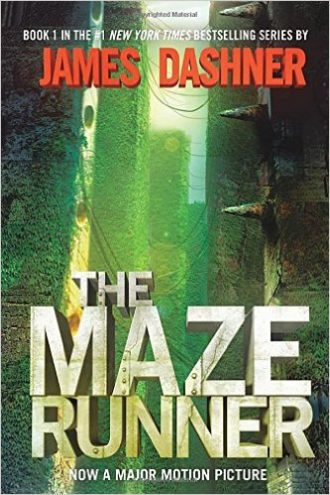 What if you woke up to discover that you knew nothing of your previous life, not even your name? What if you were then to discover that you might have had a part in doing horrible things for the government, all in the name of scientific research to find a cure for a terminal illness? Then you might be Thomas, a hapless teenager who slowly discovers that the world has succumbed to a deadly virus, and the only way to stop it is to participate in grueling trials of strength, agility, and mental acuity. Remember, W.I.C.K.E.D. is good.
What if you woke up to discover that you knew nothing of your previous life, not even your name? What if you were then to discover that you might have had a part in doing horrible things for the government, all in the name of scientific research to find a cure for a terminal illness? Then you might be Thomas, a hapless teenager who slowly discovers that the world has succumbed to a deadly virus, and the only way to stop it is to participate in grueling trials of strength, agility, and mental acuity. Remember, W.I.C.K.E.D. is good.
Blood Red Road by Moira Young
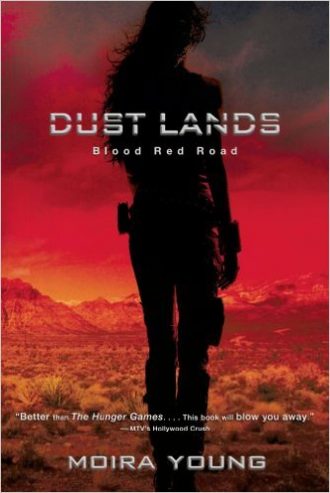 If a wasteland is your sort of thing, then Blood Red Road might be your cup of tea. After Saba and Emmi’s brother Lugh is kidnapped, Saba and Emmi begin the grueling journey to rescue him, battling the elements and the dangerous inhabitants of an apocalyptic world. Saba is forced to cage fight and kill her opponents after she and her sister are captured by a ruthless vagabond couple.
If a wasteland is your sort of thing, then Blood Red Road might be your cup of tea. After Saba and Emmi’s brother Lugh is kidnapped, Saba and Emmi begin the grueling journey to rescue him, battling the elements and the dangerous inhabitants of an apocalyptic world. Saba is forced to cage fight and kill her opponents after she and her sister are captured by a ruthless vagabond couple.
The Road by Cormac McCarthy
 The Road is dark, bleak, and barren. The story centers on a father and son who are wandering America’s roads after a terrible, unidentified event. Humanity dwindles, and America is left populated with lawless bands of thieves and murderers. The only protection that the father and son have against them is a gun. However, the true danger lies within, as the father realizes that he is dying of an illness.
The Road is dark, bleak, and barren. The story centers on a father and son who are wandering America’s roads after a terrible, unidentified event. Humanity dwindles, and America is left populated with lawless bands of thieves and murderers. The only protection that the father and son have against them is a gun. However, the true danger lies within, as the father realizes that he is dying of an illness.
Brave New World by Aldous Huxley
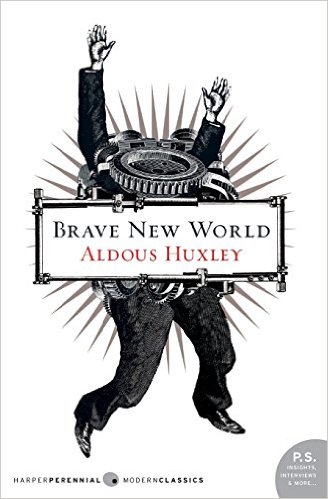 Along with 1984, Brave New World is one of the most popular dystopian novels ever written. It is probably best known for recreational use of the fictitious drug soma, and for its existential musing of life and death.
Along with 1984, Brave New World is one of the most popular dystopian novels ever written. It is probably best known for recreational use of the fictitious drug soma, and for its existential musing of life and death.
Unwind by Neal Shusterman
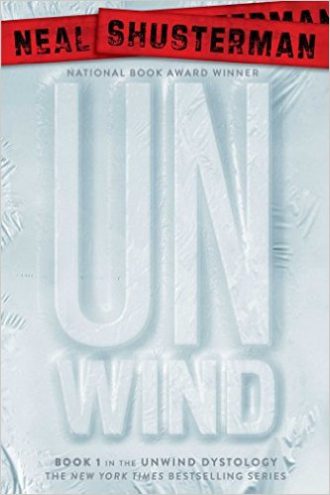 Shusterman’s Unwind is an original story that asks the question, “Can I dismember my child legally by applying for a government sanctioned procedure called unwinding?” In Neal Shusterman’s novel, the answer is, “If your child is bad, and between the ages of thirteen and eighteen, then yes.” Unwind is a startling novel that focuses on a group of teens who are trying to avoid the fate that their parents and government have selected for them.
Shusterman’s Unwind is an original story that asks the question, “Can I dismember my child legally by applying for a government sanctioned procedure called unwinding?” In Neal Shusterman’s novel, the answer is, “If your child is bad, and between the ages of thirteen and eighteen, then yes.” Unwind is a startling novel that focuses on a group of teens who are trying to avoid the fate that their parents and government have selected for them.
Radiant by Karina Sumner-Smith
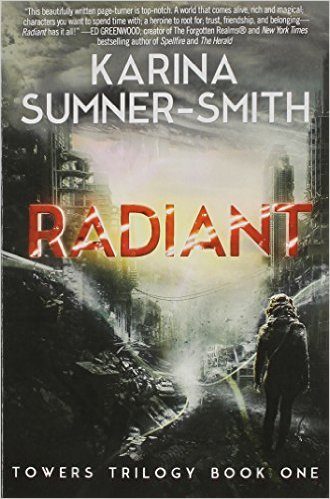 Ghosts, magic as currency, and human batteries take center stage in Radiant, a dystopian novel set in the far future in which a girl named Xhea comes to terms with her inability to do magic, thereby making her life difficult and miserable. Nevertheless, Xhea has a trait that makes her valuable: she can see ghosts. The rulers of Xhea’s world reside in towers, and she soon finds out that they desperately need her to harness the power of a specific ghost, one that generates power like a nuclear reactor.
Ghosts, magic as currency, and human batteries take center stage in Radiant, a dystopian novel set in the far future in which a girl named Xhea comes to terms with her inability to do magic, thereby making her life difficult and miserable. Nevertheless, Xhea has a trait that makes her valuable: she can see ghosts. The rulers of Xhea’s world reside in towers, and she soon finds out that they desperately need her to harness the power of a specific ghost, one that generates power like a nuclear reactor.
The Stand by Stephen King
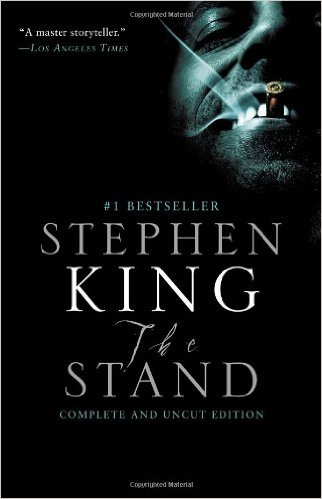 If Leo Tolstoy wrote dystopian horror, he may have written something like this. The Stand touches on every aspect of human life, and attempts to reveal the fragile nature of our health and to explore a near-extinction event for humanity. The novel begins with a virus being released by mistake from a testing facility. Most of the world’s population dies, leaving only a handful of people alive. A protagonist and an antagonist appears, challenging each other for the hearts and minds of the survivors. Ironically, a nuclear bomb, a reason for many apocalyptic scenarios, saves the day.
If Leo Tolstoy wrote dystopian horror, he may have written something like this. The Stand touches on every aspect of human life, and attempts to reveal the fragile nature of our health and to explore a near-extinction event for humanity. The novel begins with a virus being released by mistake from a testing facility. Most of the world’s population dies, leaving only a handful of people alive. A protagonist and an antagonist appears, challenging each other for the hearts and minds of the survivors. Ironically, a nuclear bomb, a reason for many apocalyptic scenarios, saves the day.
Article 5 by Kristen Simmons
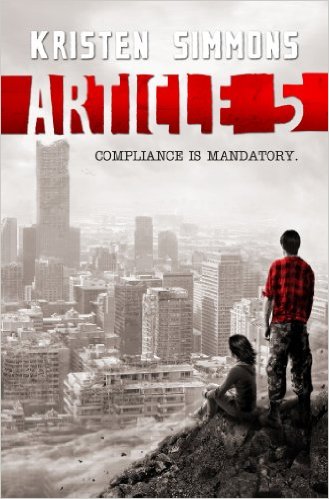 Article 5 takes its namesake from one of the laws put into place after a war devastates the United States. The article states that women cannot have children outside marriage. Those who are found guilty of violating Article 5, or any of the other Moral Statues, face imprisonment or death. Ember, the story’s protagonist, is captured with her mother for this crime. Ember escapes her confinement with the goal of setting her mother free, but later finds out that her mother died at the hands of her captors.
Article 5 takes its namesake from one of the laws put into place after a war devastates the United States. The article states that women cannot have children outside marriage. Those who are found guilty of violating Article 5, or any of the other Moral Statues, face imprisonment or death. Ember, the story’s protagonist, is captured with her mother for this crime. Ember escapes her confinement with the goal of setting her mother free, but later finds out that her mother died at the hands of her captors.
References
[1] Publisher Printing More Copies of George Orwell’s ‘1984’ After Spike in Demand, http://money.cnn.com/2017/01/25/media/george-orwell-1984-best-seller/
[2] Ibid.
Tags: book recommendations, dystopian novels, Hunger Games, readers advisory, Stephen King, The Maze Runner







